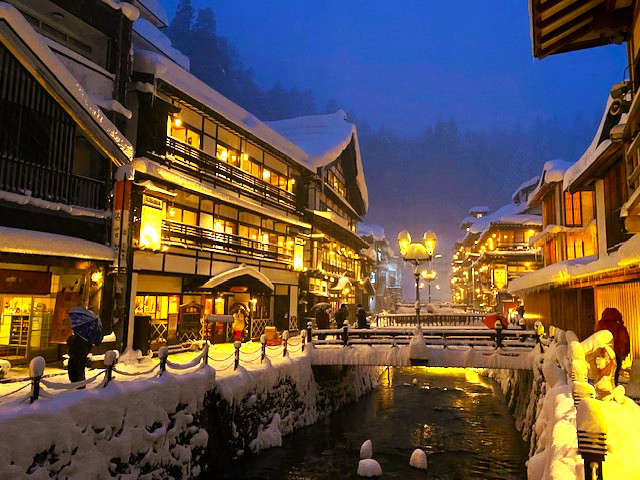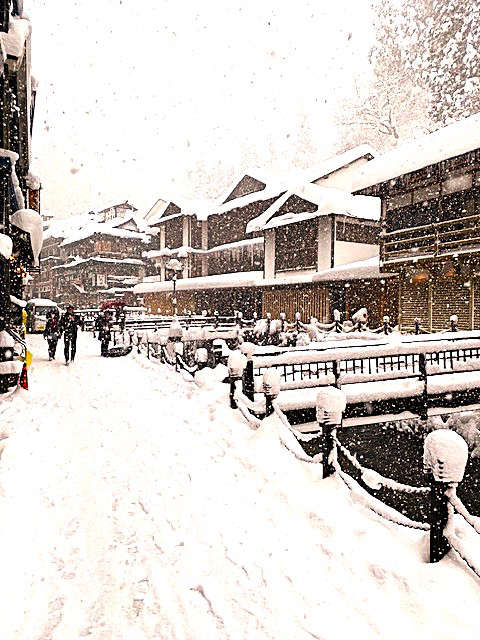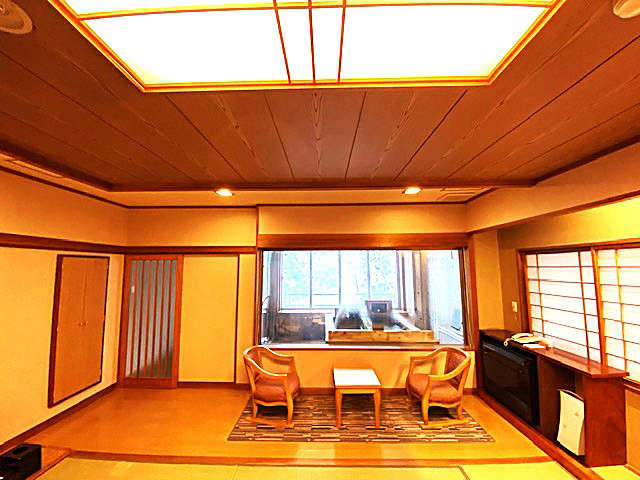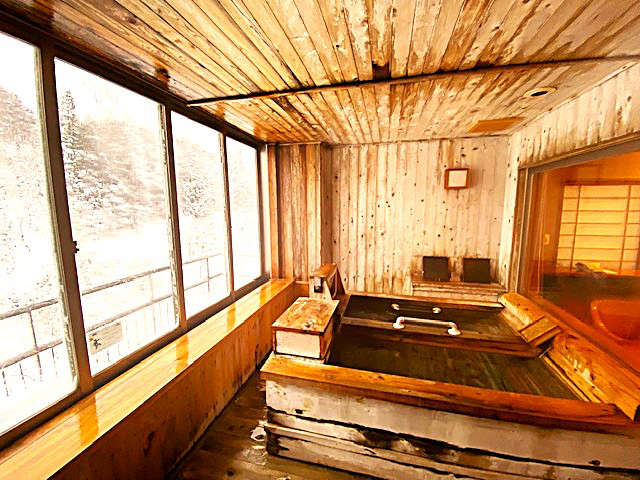
A regular reader wrote to me a while back and asked if I could highlight areas off the beaten track in Japan that would be fun for tourists visiting to explore (places that aren’t as popular as the “overtourism” spots of Tokyo and Kyoto).
I liked her suggestion, so for the foreseeable future I will write about areas that I have visited around Japan that I have found to be enchanting but perhaps aren’t necessarily on people’s travel radar or “must-see” list … until they read about them in my column!
A few years ago, Facebook friends Matt Godby and Mark Sturdivant posted a beautiful photo of Ginzan Onsen in Yamagata Prefecture as a place they would like to visit someday. It was during the winter and it looked so idyllic with all the traditional, wooden buildings covered in snow. I became obsessed about wanting to visit there.
Ginzan Onsen had never been on my radar even though I lived in the snow country of Tohoku for 20 years. At that moment, I decided to prioritize this place and visit it during the winter to experience its beauty myself.
That was one of the best decisions I ever made!

It was just as delightful and gorgeous as all the professional photos made it appear. Many fans of Hayao Miyazaki’s classic anime “Spirited Away” will immediately recognize the sights because the main street’s buildings that were featured in his film remind visitors of Ginzan Onsen. (photo)
The village of Ginzan Onsen lines both banks of the Ginzan River with beautiful wood-constructed hot spring inns and shops that transport visitors back to a bygone era that few places offer visitors in modern Japan. The village folk have worked very hard to maintain the traditional feel by keeping the buildings as they were a hundred years ago.
Ginzan Onsen literally means “Silver Mountain Hot Spring” in English, and because it is so remotely located, deeply nestled in the mountains of Yamagata Prefecture in northern Japan, its seclusion is a large part of its charm. As the name suggests, it originally was a silver mining town, but today, it is a quaint and charming village that I think ranks very high on the list of “most beautiful onsen towns” in Japan.
In future columns, I plan to write about several others that are quaint and beautiful in their own right, but Ginzan Onsen is truly a special place that sets it apart from the other onsen towns.

Its charm is, in large part, due to the wooden inns, called ryokan, that line the river on both sides. These buildings are three or four stories high and are all made of wood that is exposed to the winter elements. (photo of typical Ginzan ryokan room) It makes me nostalgic just thinking about it because it was so quintessentially Japanese in scope and appearance.
The ryokan that we stayed in had winter coats and boots available for its guests to wear when out and about (even large sizes that fit me!). Most of the tourists come in from Tokyo or beyond, so they are not even remotely prepared for the heavy snowfall that one experiences once disembarking off the train.
The village itself is largely pedestrian-only because the streets and alleyways are so narrow, and all that snow that isn’t pushed directly into the river gets piled to the sides. At night, when it’s really dark, the warm lights emanate from all the inns, shining brightly into the wintery landscape.
It truly does transport visitors back to a seemingly simpler time.

Because the snowfall is so heavy and moist, it clings to the buildings and rooftops tenaciously, giving the entire area that gorgeous winter wonderland appearance. The only thing missing was seeing geisha scurrying up and down the narrow alleyways with parasols to protect their hair and kimono from the falling snow.
However, there were plenty of people in winter yukata, with heavy outerwear darting around the streets, so I was satisfied to see the traditional dress of the inn guests in their traditional yukatas as they partook in various hot springs around the area.
At the back part of the village is a gorgeous (over 20 meters high) waterfall that gushes constantly, a very distinct and important land feature for this over 500-year-old village. We were told we could enter part of the mines from the base of the waterfall, but since it was at the height of winter and so many other aspects of the village were calling us to explore and enjoy, we didn’t attempt to go into the mine tunnels.
One has to save something to do on a future visit!
I highly recommend making reservations ahead of time and staying at least one night to get the full Ginzan experience. Every season is perfect, so if you are in the area in the spring, summer, or fall, it is still worth visiting and spending time there.
If you are a guest staying in a hotel or inn, then you can really enjoy the village and all it has to offer. Non-staying guests, I heard, have some restrictions about visiting the village because it is so charming, they want to avoid too many day-tourists who would spoil it for those who are paying guests staying in the many traditional inns in the area.
Overtourism is indeed an emerging problem in Japan, so localities are doing what they can to make sure visitors have a good experience and an enjoyable time, so if that means limiting the number of passersby who come for the day, then so be it.
If traveling by train, it is quite easy to get there via the JR Yamagata Shinkansen from Tokyo to Oishida Station (under three hours), and then buses will take you to the actual village from there.
Another quaint feature of the village is its lovely bridges that crisscross the river to allow visitors easy access to both sides of the main stretch of shops and ryokans. At night these are lit up with gas lights, which only add to its appeal and attractiveness.
Day guests can partake in some onsens for a fee, but again, it is best to inquire ahead of time to make sure you can get into an inn just for a soak due to overcrowding. If you decide to stay overnight, your inn will have all you need to enjoy the hot springs.
Be sure to follow proper hot spring protocol! No clothing allowed in the bath, and it is best to wash your body thoroughly before entering the hot spring to soak. Some onsens do not allow people with tattoos, so it is best to inquire about this rule before reserving a room.

Our room had its own private hot spring bath in an enclosed area, making it so relaxing to soak and watch it snow while up to your neck in the curative, mineral enriched hot spring waters. (photo of room bath)
A big thank you to my friends, Matt and Mark, who unwittingly happened to post an alluring night photo of Ginzan Onsen that prompted me to go and check it out for myself.


 Flood Warning continues with more rain in weekend forecast
Flood Warning continues with more rain in weekend forecast
 Indiana State Parks hiring for lifeguards at public pools and beaches
Indiana State Parks hiring for lifeguards at public pools and beaches
 IDVA offers grant opportunities for non-profit organizations serving the Indiana Veteran Community
IDVA offers grant opportunities for non-profit organizations serving the Indiana Veteran Community
 Gov. Braun activates Indiana National Guard to aid in storm recovery
Gov. Braun activates Indiana National Guard to aid in storm recovery
 Passenger taken to IU-Methodist from two-vehicle Shelbyville crash
Passenger taken to IU-Methodist from two-vehicle Shelbyville crash
 Shelbyville makes major advancement in public safety and emergency response times
Shelbyville makes major advancement in public safety and emergency response times
 Registration open for Tree Trot 5K Run
Registration open for Tree Trot 5K Run
 Flat Rock Christian Church offers shelter Wednesday with potential severe weather
Flat Rock Christian Church offers shelter Wednesday with potential severe weather




